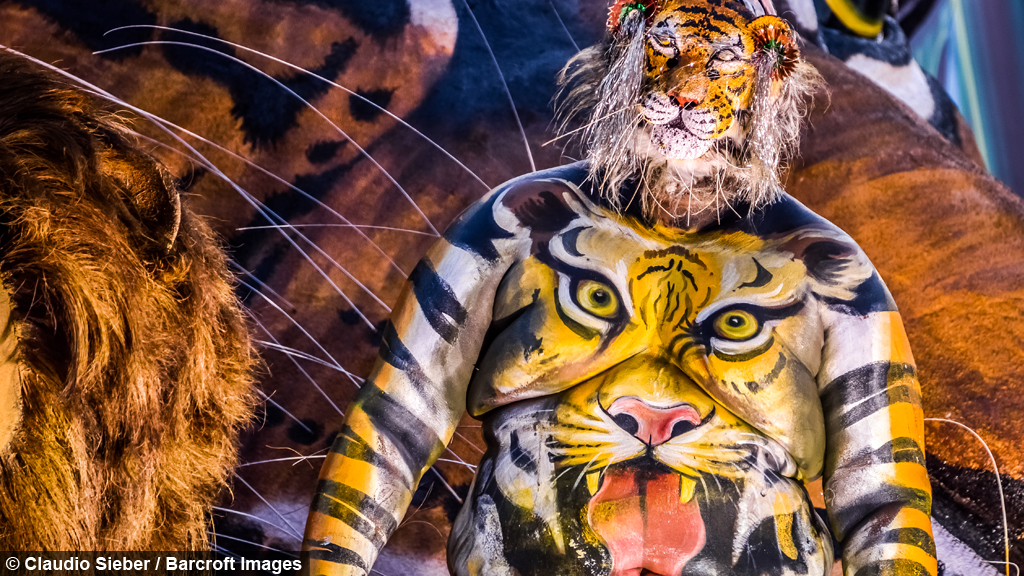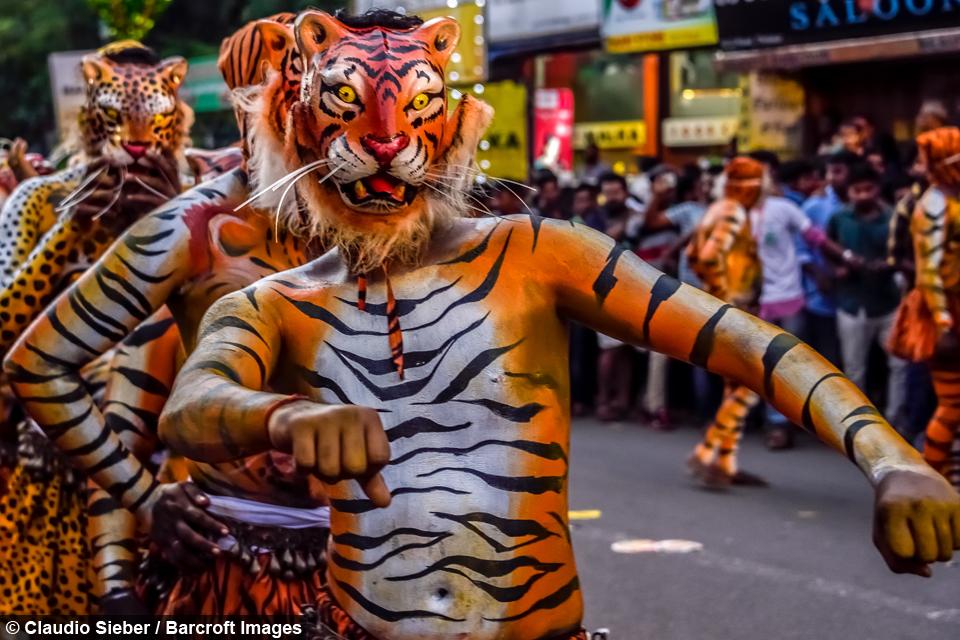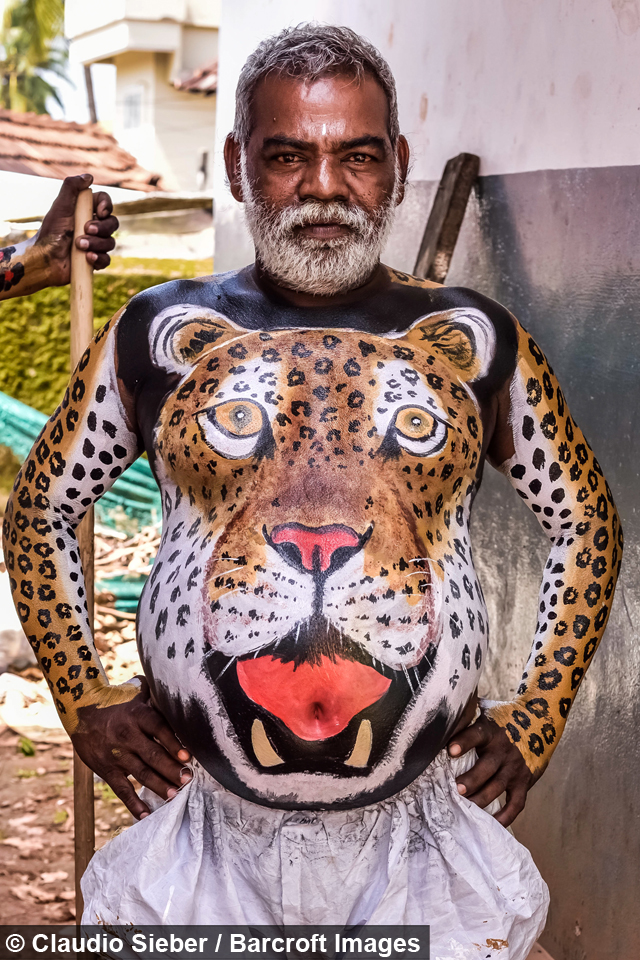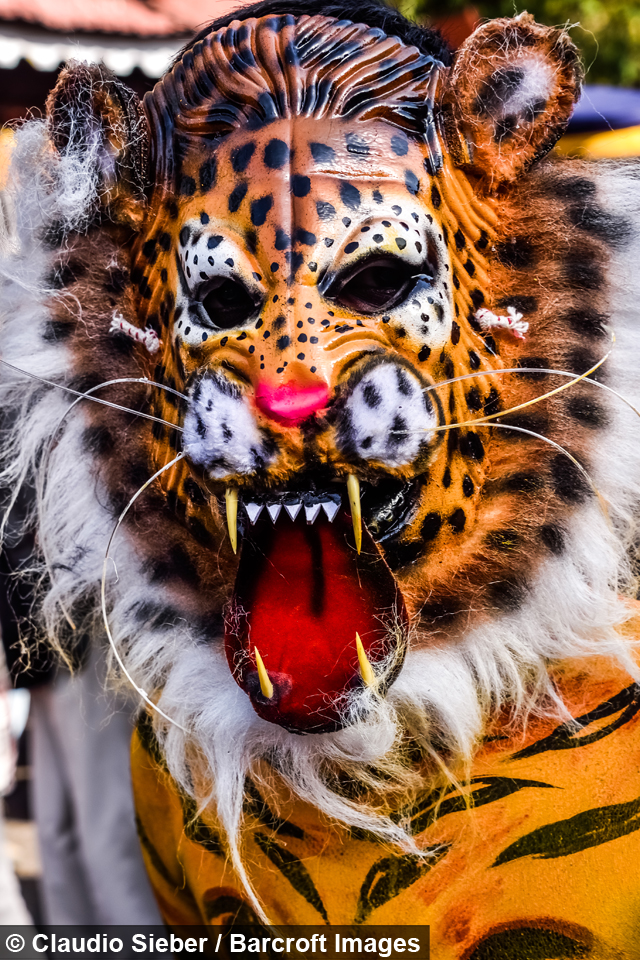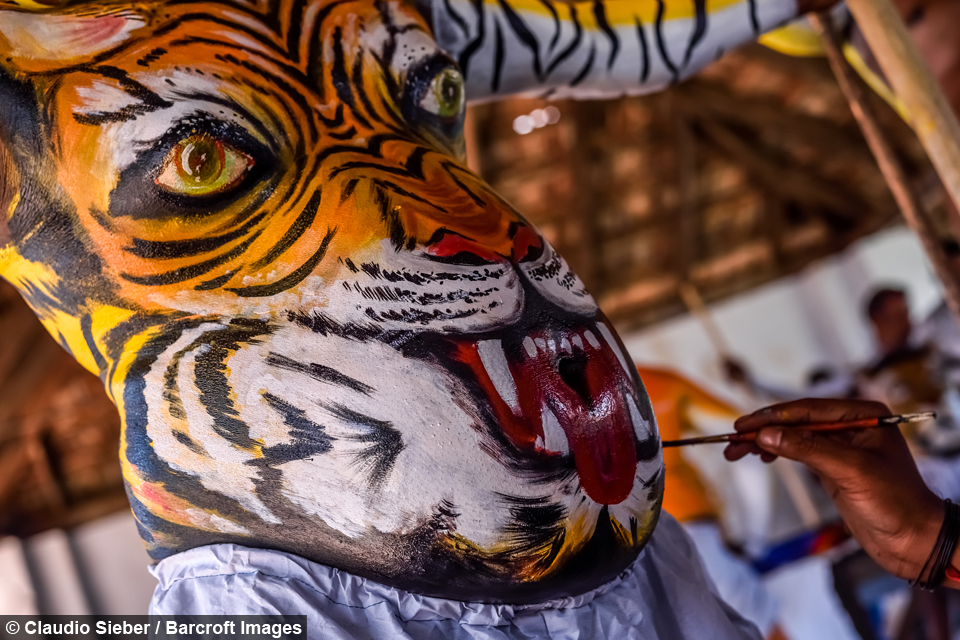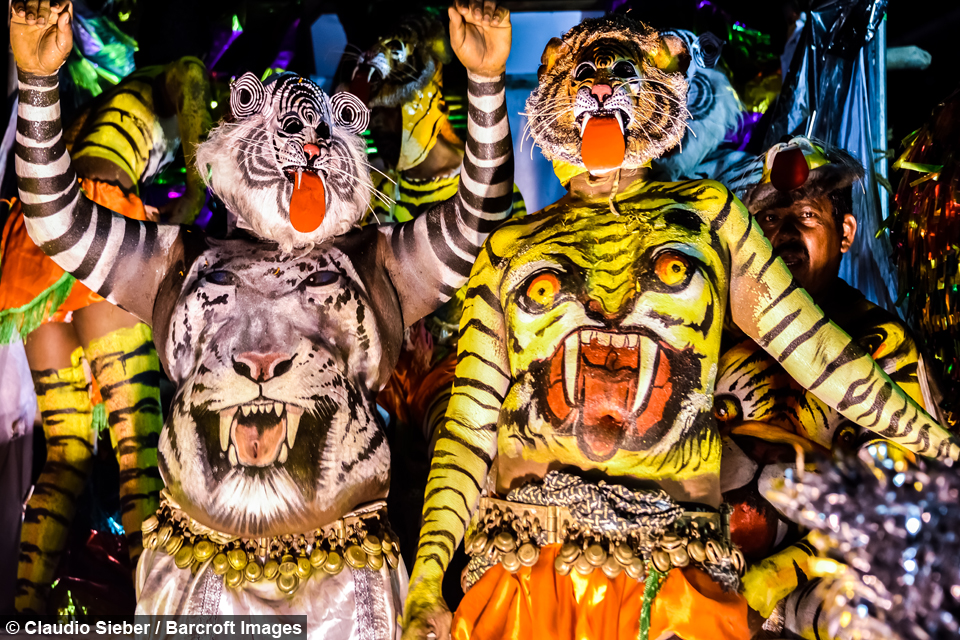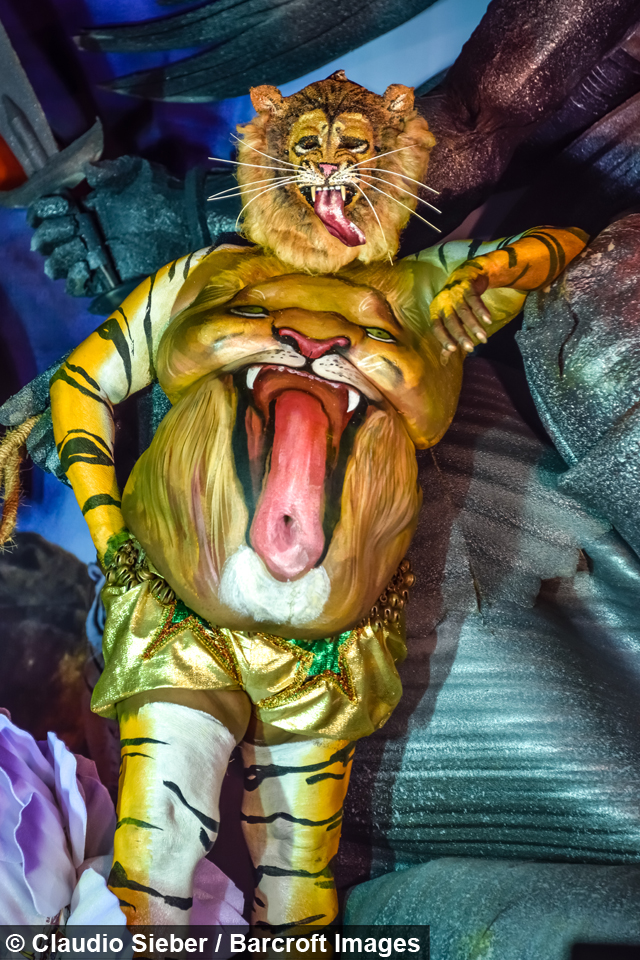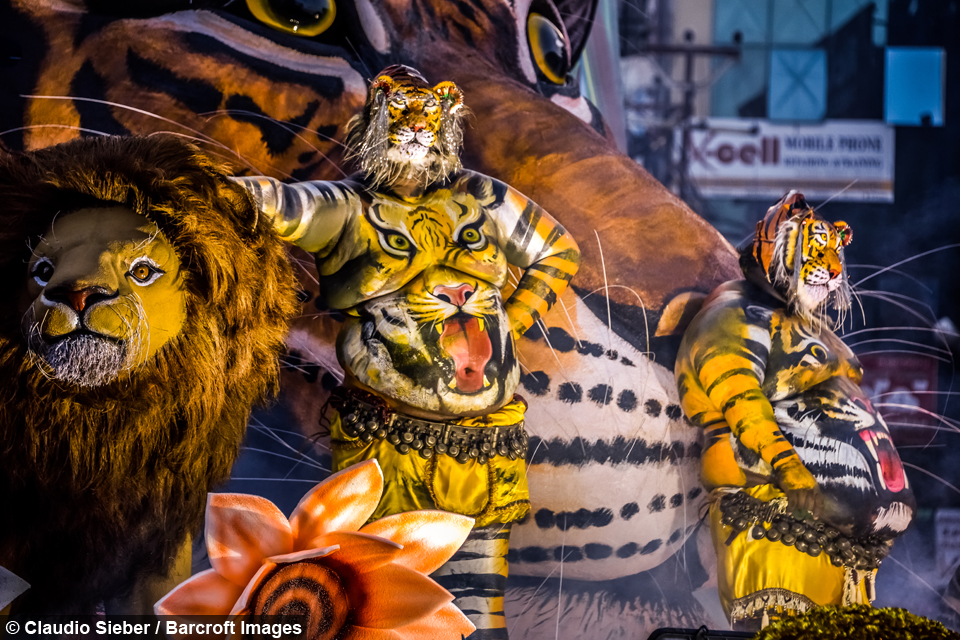Dancing Tigers: Performers transform their bodies into big cats at religious festival
By Hannah Stevens @hannahshewans
Scroll down for the full story
Claudio Sieber captured this fascinating spectacle in Thrissur, India in the Kerala State during the Onam Festival in September.
The Hindu festival is typically celebrated in the Kerala State - across all socio-economic and religious divides - and lasts for 10 days, including four state holidays.
Sieber said: “During Onam celebrations, events and festivities spread all over Kerala State. Besides other events I picked this one because it might be the most interesting but also the weirdest of all.
“I’m interested in cultural affairs and with wobbling Indians with predator body paintings, how could I resist?”
The tiger dance, called the Pulikkali, is performed by trained artists who paint themselves as tigers, lions or leopards and dance through the streets to the rhythmic beats of instruments like the Udukku and Thakil.
Revolving around the theme of tiger hunting, the tradition dates back over 200 years and was apparently first introduced by Maharaja Sakthan Thampuran.
Despite the religious and cultural significance of the festival, Claudio found himself welcomed into the fold with open arms by all the locals.
He said: “As usual in India, it doesn’t take long until the visitor is part of the event. I was able to choose either to capture the event or be part of it.
“I had my difficulties when considering but because I don’t have a lot of fat to wobble, I decided to remain as an outsider and to capture the event.
“When roaming around behind the scenes I gained many new Indian friends and was able to chat with the participants as well. This made me stay.”
Each dancer patiently sat for up to seven hours to have their delicate watercolour paint applied before affixing big cat masks onto their faces to complete the look.
Dance troupes assembled from all over the district of Thrissur to show off their skills and the entire procession lasted about 12 hours.
Parading through the streets both on foot and on decorative floats, the competition is fierce between troupes to have the best dancers, costumes and floats.
The dance is one of many events that occur during the festival, which falls during the Malayalam month of Chingham and commemorates the homecoming of King Mahabali and reveres the fifth avatar - reincarnation - of Lord Vishnu.
Traditionally considered a harvest festival, the celebrations are rooted in the Hindu mythology surrounding the arrogance of King Mahabali, who once ruled all realms of heaven and earth until the Devas - Gods - saw his rise to power as a threat to their omnipotence.
Ultimately Vishnu agreed to help the Devas and was reborn into the world as a boy known as Vamana. He posed as a Brahmin - a caste of specialised priests in Hinduism - and Mahabali received him with all traditional honours and courtesies, even offering him a gift.
Vishnu requested a space of land equal to three of his steps and, refusing to heed warnings of trickery, Mahabali agreed.
The god responded by growing to his normal size and taking three giant steps - one to encompass the earth, the second reclaiming the heavens and the third, at Mahabali’s request, directly onto his head.
Mahabali was sent to the underworld and the site where Vishnu placed his foot became known as the village of Thrikkakara, but the King was granted immortality in return for his humility and was permitted to return annually to see the citizens of is country - and so the Onam festival was born.
